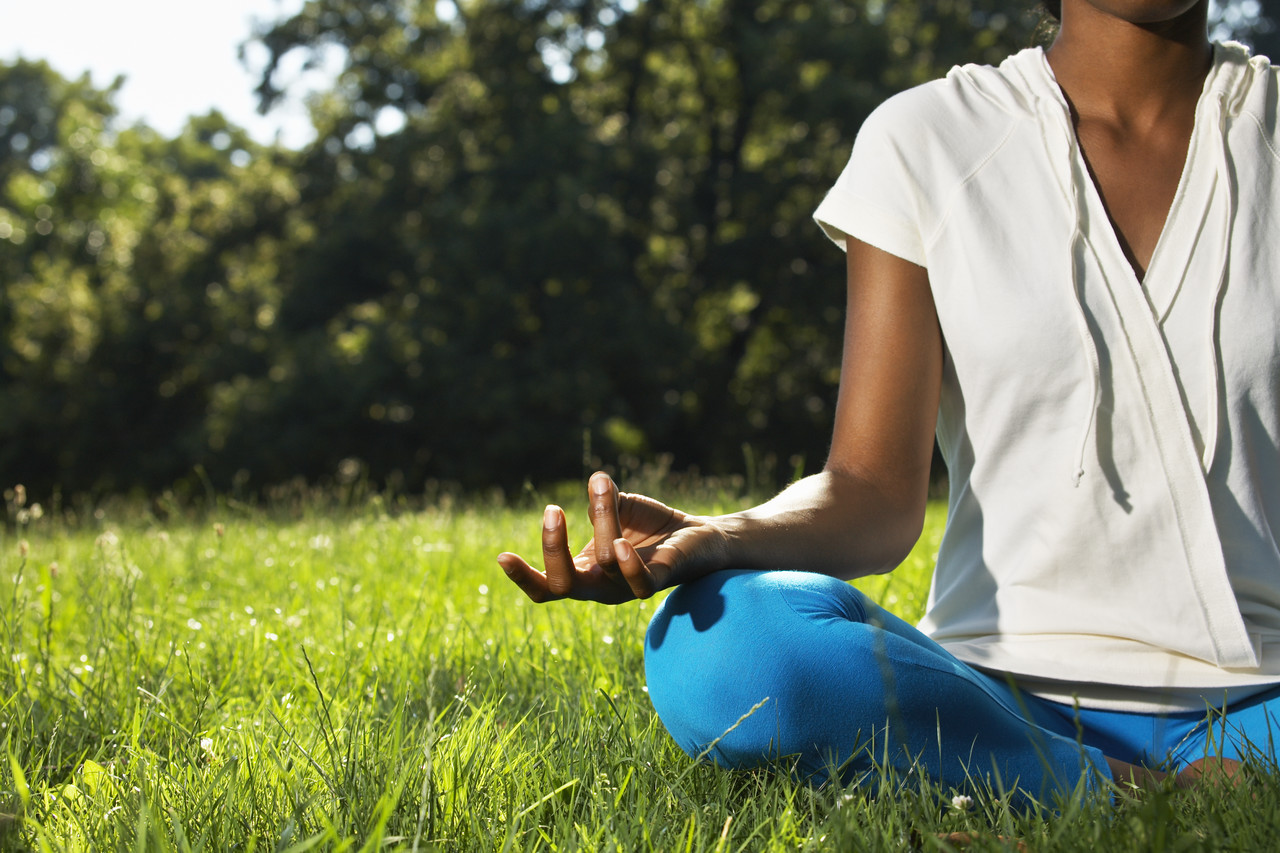
It may seem odd that stretching your body into different shapes and sizes is great for an all-around healthier and happier lifestyle, but that’s the gift of yoga. Body strength, increased energy, improved immunity, a focused and peaceful mind, discipline, patience—the list goes on.
Above all, yoga is an opportunity to live a balanced life on and off the yoga mat. It’s certainly not just about flexibility. It’s about uniting the breath with body and mind.
And it’s a very powerful tool of art and science. The experiences and benefits gained while practicing promote mental and emotional stability.
Though, just like anything worth doing, yoga takes commitment. It’s a workout of the mind, body and spirit. And a way to find what brings one happiness in all areas of life.
A brief yogi history
The origins of yoga date back way before butt-shaping pants and fancy, colorful mats. Over 5,000 years ago, the word yoga was first mentioned in the Indian “Vedas.” These religious texts are written in Sanskrit, an ancient Indo-European language.
Among many other translations, the Sanskrit word “yoga” means “to join”. Thus, yoga is about unity. It’s about joining your self-awareness with an awareness of your surroundings.
For many years, the practice of yoga was simply an oral tradition passed from teacher to student. This was until an Indian sage named Patanjali collated the “Yoga Sutras”.
Written nearly 2,000 years ago, the “Sutras” are a compilation of 195 statements that outline yogic philosophy. “Sutra” translates to “thread”, meaning that the “Sutras” are a closely knit framework that build the path of yoga.
The eight limbs of yoga
This may sound pretty confusing, and maybe even a little intense—that’s okay.
What matters most is at the heart of the “Yoga Sutras”; the Eight Limbs of Yoga. These eight steps greatly influence modern yoga and serve as guide towards living a fulfilling and well-balanced life.
The Eight Limbs are as followed (described by Yoga Journal):
[slideshow_deploy id=’16505′]
As you can see, the postures and physical aspect of yoga (asana) is merely one of eight applications. Asana is the most commonly known aspect of yoga, but it is most beneficial to practice asana in unity with all of the yogic limbs.
The reality is that your mind—and your breath—have so much to do with your ability to achieve a yoga posture.
The importance of breath
Yoga poses strengthen your muscles and gently massage your organs, but in order to get the most out of these poses you have to be aware of your breath.
Pranayama, or breath control, is extremely important in yoga—and in all areas for that matter (think about taking a deep breath in stressful situations). Breathing technique is like personal detoxification.
As you mindfully practice yoga, it goes hand-in-hand with each posture. William Doran at Expressions of Spirit said that practicing pranayama and asana together is considered a high form of self-discipline.
It produces physical sensations of heat within the body. This allows for more openness in postures and also purifies subtle nerve channels, promoting a calmer mind. With a calm mind, comes better concentration and awareness.
Yogic breathing exercises can be done with and without postures. The Art of Living notes that 80 percent of bodily toxins are released in pranayama.
Try practicing deep, controlled breath while sitting in afternoon traffic or before bed and you’ll be a yogi in no time.
How to start a daily yoga routine
You don’t need a studio membership to practice yoga. For beginners, all it takes is an open mind and a little commitment.
Yoga is a wonderful way to start and end the day. By getting into a routine, it is easier to develop a regular yoga practice.
Try the following yoga poses before breakfast or bedtime (or anytime!):
Child’s Pose: Start by kneeling with buttocks on heels and knees spread. Sit up straight and on exhalation, bow forward and slide arms/hands forward. Extend through fingertips.
*Stretches the hips, thighs, and back torso.
Cat/Cow Pose: Get on hands and knees, with hands placed shoulder distance apart and knees beneath hips. As you inhale, drop belly towards the ground and lift chin/chest towards the ceiling while gazing up (cow). As you exhale, round your back by drawing the belly into your spine (cat). Repeat at least five times.
*Allows flexibility in the spine; stretches the neck and back torso; strengthens abdominal organs
Garland Pose: Begin by stepping feet wide, bending knees, and lowering hips. Thighs should be wider than torso, but feet should be kept together. It’s fine if heels lift off the ground, but make sure to support them with a blanket or mat. Bring upper arms to meet the inside of your knees with elbows pressed and hands in prayer position. Try to bring forearms parallel to the floor. Keep spine straight and remember to breathe!
*Stretches the hips, thighs, back torso, ankles, and groins; increases circulation in the pelvis
Yoga studios near Georgia State:
[slideshow_deploy id=’16503′]

Hi Dude,
This is a very good post which helped me the solving problem of regular yoga practice. Thanks!
regards;